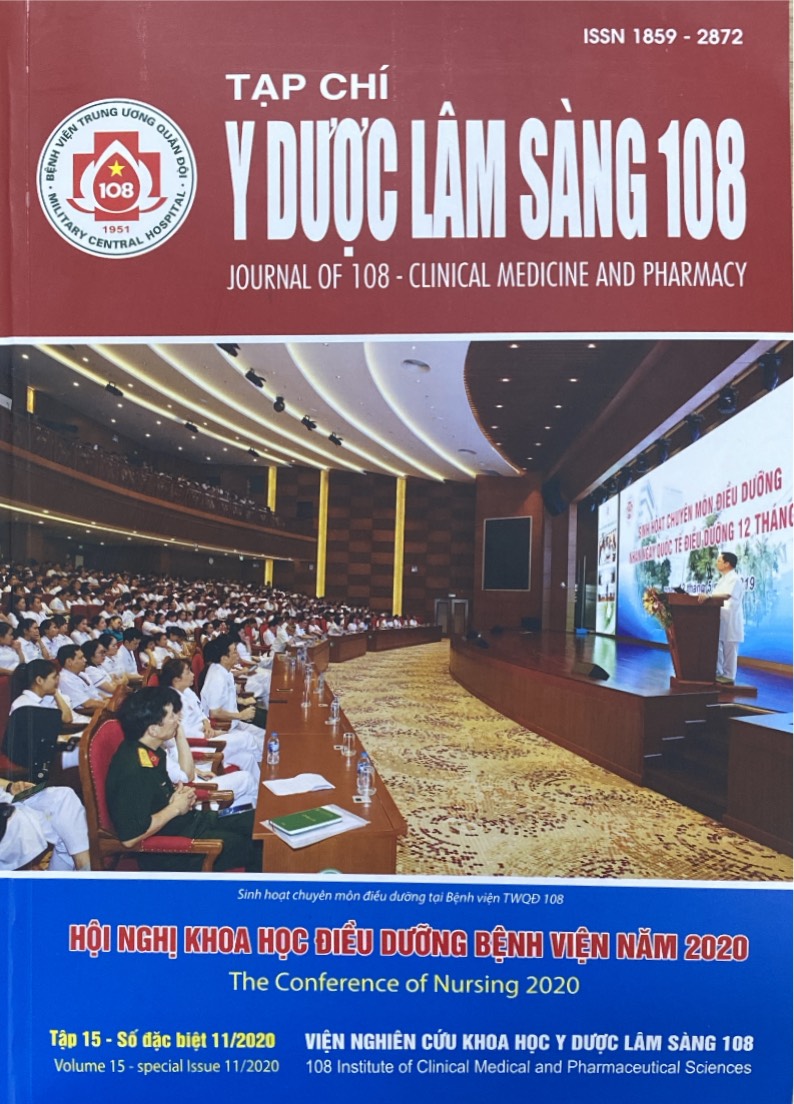Study on modifications of some hemostastic and coagulation indicators in pregnant women
Main Article Content
Keywords
Abstract
Objective: To evaluate the changes in hemostastic and coagulation indices in pregnant women. Subject and method: We conduct a descriptive cross-sectional and prospective research on 40 pregnant women attending antenatal examination in the Outpatiens and Obstetrics Gynaecology Department of 108 Military Central Hospital, from October 2017 to March 2019; the control group included 30 healthy females, not pregnant and similar age. Both the control and the study group underwent some hemostastic and coagulation evaluation tests inluding platelet number, prothrombin percentage (PT%), activated partial thromboplastin time (APTT) and fibrinogen quantification at 3 point time of pregnancy period: First trimester, second trimester and third trimester calculated on the first day of the last menstrual period and compared to the control group. The result of each group compaired to each other. Result: The number of platelets in the first trimester, second trimester and third trimester in pregnant women was 255.35 ± 45.11G/L, 245.83 ± 44.81G/L and 235.30 ± 41.43G/L, respecitvely. Prothrombin percentage was 110.10 ± 9.09%; 111.43 ± 9.66% and 112.15 ± 13.98% corresponded with each 3 months of pregnancy period. The APTT in the first 3 months, second 3 months and the last 3 months was 28.42 ± 2.48s, 28.42 ± 2.45s and 27.96 ± 2.13s, correspondingly. The amount of fibrinogen in the first 3 months was 3.92 ± 0.74g/L; the second 3 months was 4.24 ± 0.82g/L and the last 3 months was 4.49 ± 0.78g/L. Conclusion: The platelet number of study goup decreased significanty in the last 3 months, comparing to that of control group and the first 3 months of pregnancy period. The PT (%) and the APTT in pregnant women were not significantly different from the control group. The concentration of fibrinogen in pregnant women increased significantly, comparing to the control group during pregnant period.
Article Details
References
2. J. D. P., Jessica AR, David RD (2018) Platelet Counts during Pregnancy. New England Journal of Medicine 379: 32-43.
3. GS Piazze J, Spagnuolo A (2011) Platelets in pregnancy. Journal of Prenatal Medicine 5: 90-92.
4. Boehlen F, Hohlfeld P, Extermann P et al (2000). Platelet count at term pregnancy: A reappraisal of the threshold. Obstetrics and gynecology 95: 29-33.
5. JY Liu XH, Shi H (2009) Prospective, sequential, longitudinal study of coagulation changes during pregnancy in Chinese women. Gynaecol Obstet 105: 240-243.
6. AA Lanir N, Brenner B (2003) Procoagulant and anticoagulant mechanisms in human placenta. Semin Thromb Hemost 29: 175-184.
7. Phạm Thị Minh Ngọc (2018) Nghiên cứu một số chỉ số đông máu của thai phụ. Luận án Tiến sĩ, Đại học Y Hà Nội.
8. A Durotoye I, Babatunde AS, Olawumi HO (2012) Haemostatic Parameters during Pregnancy in Ilorin, Nigeria. Trop. J. of Health. Sci 19: 18-22.
9. A. O. (2016) Hematological changes in pregnancy - the preparation for intrapartum blood loss. Obstet. Gynecol. Int. J 4: 1-5.
10. EC Paolo S (2013) Hemostatic changes in pregnancy. Reviews in Health Care 4: 31-39.
 ISSN: 1859 - 2872
ISSN: 1859 - 2872
